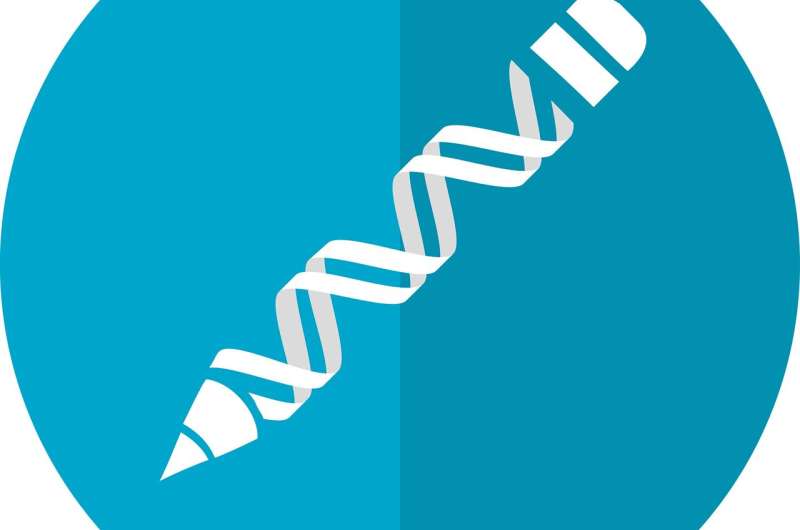Credit: CC0 Public Domain
CRISPR-Cas9, the gene-editing technique whose twin founders were honoured with the Chemistry Nobel on Wednesday, is a tool that can change the DNA of animals, plants and microorganisms with extreme precision.
Hailed by the Nobel committee for its "breathtaking potential", the technology has revolutionised the study of molecular life, already contributing to experimental cancer treatments and drought-resistant crops.
Dual breakthroughs
While researching a common and harmful bacteria in the early 2000s, French geneticist Emmanuelle Charpentier discovered that it carried an ancient defence mechanism allowing it to disrupt viral DNA, hence protecting it from future infection.
At around the same time, fellow laureate Jennifer Doudna was leading research at the University of California, Berkeley, looking into the function of RNA—the molecule that instructs the coding of genes.
A handful of research groups were also studying the repetition of a sequence of genetic code within microorganisms, known as clustered regularly interspaced short palindromic repeats—CRISPR.
Working together, Charpentier and Doudna used their new knowledge of RNA and CRISPR to fuse the two into a single molecule, creating a pair of genetic "scissors", which can snip DNA at a given location.
Code breaker
They published their discovery of the CRISPR-Cas9 tool in 2012, and several other groups then demonstrate how it may be used to modify the genome in cells from both mice and humans.
In theory the scissors can make cuts in a precise part of any genome they choose, opening the door to using the cell's natural systems to repair "faulty" DNA and rewrite the code of life itself.
Genetic scissors have since become widely used in plant breeding.
Among other applications, researchers have already edited rice genes to make the plant absorb heavy metals from soil, leading to improved variety and lower levels of cadmium and arsenic in the crop.
They have also developed crops to better withstand drought and pests—something that had traditionally been managed with harmful pesticides.
Controversy
In 2017 Chinese scientists used an adapted version of CRISPR-Cas9 to correct a single, mutated letter in the genome of human embryos that causes a potentially fatal genetic blood disorder.
Controversy over CRISPR-Cas9 use in humans exploded a year later when Chinese scientist He Jiankui claimed to have altered the DNA of twin girls to prevent them from contracting HIV.
China's science ministry swiftly ordered a halt to baby gene-editing experiments after He's work prompted criticism from the international community, denouncing it as premature and dangerous.
Many fear such technology could lead to so-called "designer babies" with desired features such as intelligence engineered into their genes.
Disease hope
CRISPR-Cas9 is also now used to create new therapies for cancer by manipulating the gene coding in the human immune system.
Trials are also underway to see if they can use the scissors to treat inherited diseases such as sickle cell anaemia, as well as hereditary eye disease.
Scientists are also developing methods for repairing genes in large organs, including the brain, potentially paving the way to treatment for devastating diseases such as muscular dystrophy and Huntington's disease.
© 2020 AFP
























